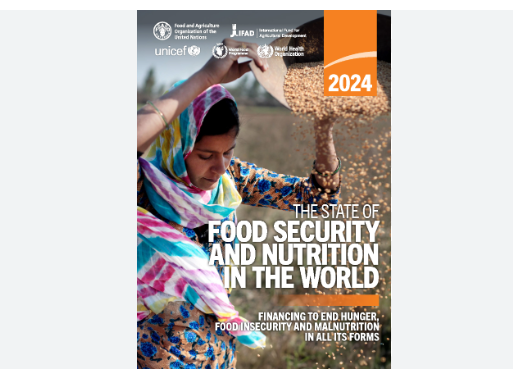State of Food and Agriculture 2024 Report
Recent findings from the Food and Agriculture Organization (FAO) highlight staggering hidden costs within global agrifood systems. The study estimates these costs at approximately $12 trillion annually, with 70% linked to unhealthy diets. This has important implications for public health and environmental sustainability.
Health Impacts of Diets
The study identifies 13 dietary risk factors contributing to non-communicable diseases (NCDs). Key concerns include low intake of whole grains, fruits, and vegetables, alongside excessive sodium and high consumption of processed meats. These dietary patterns vary across different agrifood systems.
Agrifood System Typology
FAO categorizes agrifood systems into six types – protracted crisis, traditional, expanding, diversifying, formalizing, and industrial. Each type has unique hidden costs and challenges. For instance, protracted crisis systems face severe food insecurity, while industrial systems are marked by high processed meat consumption.
Environmental Costs
Unsustainable agricultural practices drive important environmental hidden costs. These include greenhouse gas emissions, nitrogen runoff, and water pollution. Countries with diversifying agrifood systems incur the highest costs, estimated at $720 billion. Protracted crisis systems also bear substantial environmental burdens relative to their GDP.
Social Costs and Inequalities
Social costs manifest primarily in traditional agrifood systems and those in protracted crises. These costs represent 8% and 18% of GDP, respectively. Addressing poverty and undernourishment is crucial for improving livelihoods in these contexts.
Case Studies and Local Contexts
The report features case studies from countries like Australia, Brazil, and India. These examples illustrate the importance of adapting strategies to local contexts and stakeholder priorities. They provide vital information about diverse agrifood system challenges and potential solutions.
Call for Collective Action
FAO emphasises the need for a value-driven transformation of agrifood systems. This requires a shift from traditional economic measures to true cost accounting. Decision-makers must recognise hidden costs to enhance societal value in food systems.
Recommendations for Sustainable Practices
Key recommendations include financial incentives for sustainable practices, promoting healthy diets, and empowering consumers with information. Governance and civil society must be strengthened to support equitable agrifood systems.
The State of Food and Agriculture (SOFA) report provides an annual overview of agrifood system topics. This year marks the first focus on the same theme consecutively, underscoring the urgency for transformation in agrifood systems.
Important Facts for Exams:
- SOFA – The State of Food and Agriculture report is an annual publication by FAO. It focuses on agrifood systems and marks urgent transformation needs for sustainability.
- NCDs – Non-communicable diseases include conditions like heart disease and diabetes. They are linked to unhealthy dietary patterns in agrifood systems across the globe.
- True Cost Accounting – This approach goes beyond traditional economic measures. It aims to recognise hidden costs in food systems to enhance decision-making and societal value.
- Agrifood System Typology – FAO categorises agrifood systems into six types. These include protracted crisis and industrial systems each presenting unique challenges and hidden costs.
Month: Current Affairs - November, 2024
Category: Agriculture Current Affairs


